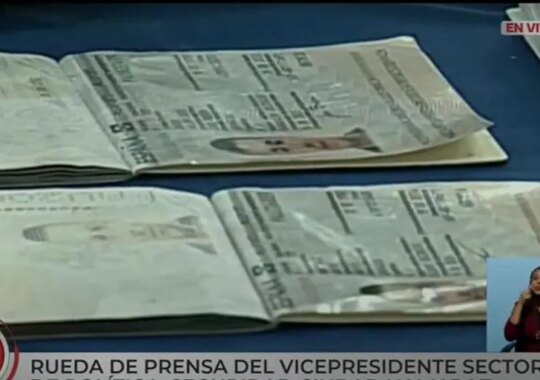:quality(85)/cloudfront-us-east-1.images.arcpublishing.com/infobae/2PJR6G4XUVCJBDPTUPMBKMV6RU.jpg 420w)
They are not a jokeneither a mockery nor a parody. But they do want everyone to laugh: the Ig Nobel Prizes have just held their annual ceremony to recognize the achievements of the Strangest investigationsoriginal or striking. Created in 1991 by the American mathematician Marc Abrahams, and organized by the scientific humor magazine Annals of Improbable Research (AIR), the awards are presented at the Harvard University by authentic Nobel Prize winners, and they pretend “pretend” Celebrate the unusualhonor the imaginative and stimulate the everyone's interest in sciencemedicine, and technology.”
As the German scientific publication Weiter Denken sums up, “The Ig Nobel Prize puts the spotlight on research results that would otherwise probably never have been heard. For example, why wombat droppings are square or round. How much saliva does a person produce in a day?What these questions have in common is that they seem bizarre at first glance, but they are highly relevant to progress and business.” And, as he explains, “despite all the fun, they pursue a serious objective: the format must offer a alternative access to current science and draw attention to the relevance that even seemingly strange research can have.”
Therefore, although the name of the awards comes from a play on words from the adjective Ignoble (ignoble), the winners – who go up to the stage and give a speech as if it were the Oscars– They collected their awards with humour but solemnity, aware that the background behind the laughter is totally 'noble'.
And what have been the strangest scientific investigations of recent months? These have been the winners of the 2024 Ig Nobel Prizes:
Peace Prize: BF Skinner, for his experiments to investigate the feasibility of hosting live pigeons inside missiles to guide their path.
Botany Award: Jacob White and Felipe Yamashita, for finding evidence that some real plants imitate the shape of neighboring artificial plastic plants.
Anatomy Prize: Marjolaine Willems, Quentin Hennocq, Sara Tunon de Lara, Nicolas Kogane, Vincent Fleury, Romy Raysquiere, Juan José Cortés Santander, Roberto Requena, Julien Stirnemann and Roman Hossein Khonsari, to study if the hair in the heads of people in the northern hemisphere tends to spin in the same direction (clockwise or counterclockwise) as the hair of people in the southern hemisphere.
Medicine Award: Lieven A. Schenk, Tahmine Fadai and Christian Büchel, for demonstrating that a fake medicine that causes painful side effects may be more effective than one that does not.
:quality(85)/cloudfront-us-east-1.images.arcpublishing.com/infobae/HPMBGHNPNRDH3GZZWOEQNR2UUY.jpg 420w)
Physics Award: James C. Liao, for demonstrating and explaining the skills of Swimming of a dead trout.
Physiology Award: Ryo Okabe, Toyofumi F. Chen-Yoshikawa, Yosuke Yoneyama, Yuhei Yokoyama, Satona Tanaka, Akihiko Yoshizawa, Wendy L. Thompson, Gokul Kannan, Eiji Kobayashi, Hiroshi Date and Takanori Takebe, for discovering that many mammals can breathe through your anus. (And as far-fetched as it may seem, the medicinal implications are positive. As The Guardian explains, “after a series of tests on Mice, rats and pigsJapanese scientists have discovered that animals absorb oxygen administered through the rectum, work that supports a clinical trial to determine whether the procedure can treat respiratory failure.
Probability Prize: František Bartoš, Eric-Jan Wagenmakers, Alexandra Sarafoglou, Henrik Godmann and other colleagues, to show, both in theory and in 350,757 experimentsthat when you flip a coin, it tends to land on the same side it started on.
Chemistry Award: Tess Heeremans, Antoine Deblais, Daniel Bonn and Sander Woutersen, for using chromatography to separate drunken worms of sober worms.
Demography Award: Saul Justin Newman, for discovering that many of the people famous for having the longest lives lived in places with poor birth records and deaths. (This is bad news for millionaire longevity fanatics, because the study concludes that “relative poverty and short life expectancy in their birthplaces are unexpected predictors of centenarian and supercentenarian status, and support a primary role for fraud and error in generating extraordinary records of human age.”)
:quality(85)/cloudfront-us-east-1.images.arcpublishing.com/infobae/233RVETMZRFBZLZJMCYCOX4JCM.jpg 420w)
Biology Award: Fordyce Ely and William E. Petersen, for exploding a paper bag next to a cat standing on a cow to investigate how and when cows expel milk.
Following the awards ceremony, a complementary event called Ig Nobel Face-to-Face will take place this Saturday, September 14, at the MIT Museum. At this event, the new Ig Nobel Prize winners will ask each other questions about their work and They will answer the public's questions.




